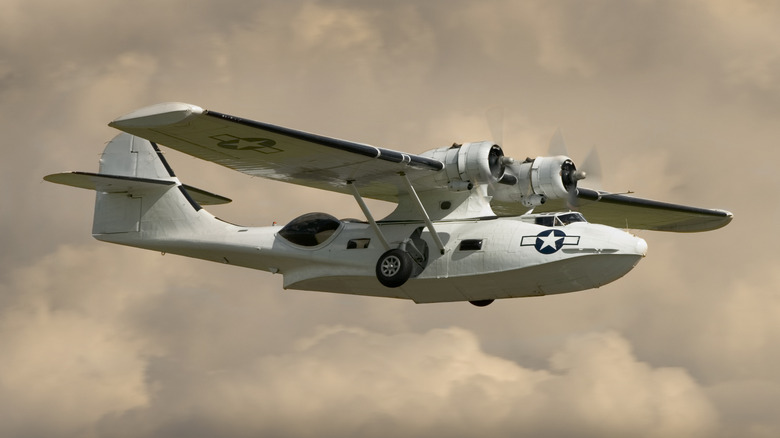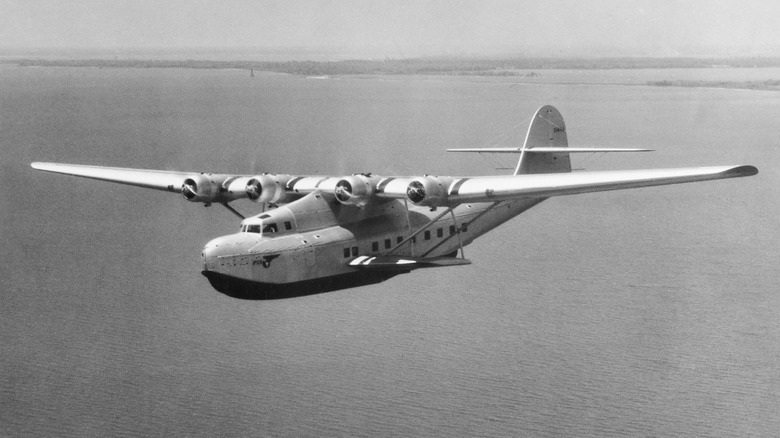What Are Flying Boats, And When Did The US Military Stop Using Them?
The U.S. military has employed a wide variety of aircraft over the years to transport troops, deliver cargo, and engage in combat. Perhaps no aircraft in its historical fleet, however, is more random or peculiar than the one commonly referred to as a flying boat. The name perfectly describes this aircraft: As a cross between a ship and a plane, it had the ability to land on water and refuel at sea. This unique feature allowed it to travel greater distances than planes that required airfields to refuel.
Flying boats like the Curtiss H-12L served in World War I, while the Grumman G-21 Goose and PBY Catalina carried out various missions during World War II. In fact, the longer the military used them, the more versatile these aircraft became. They proved themselves to be much more than just heavy bombers the Allies flew during World War II, and became so popular that military forces in other countries began utilizing them as well. However, the U.S. military's use of flying boats come to a close by the end of WWII because traditional planes were pretty much outpacing flying boats on every measure. Eventually, advancements in technology made them rather obsolete.
Flying boats were used commercially in between WWI and WWII
Before they were used by the U.S. military, flying boats were a preferred method of air travel. In the 1930s, Pan American Airways (Pan Am), popularized long-distance flights, which often involved flying boats. Manufacturers like Boeing and Sikorsky, which later started making military helicopters, used them to transport people who could afford it around the world. Compared with traveling by traditional passenger ships, flying boats could get you where you needed to go much faster — but it came at a price. In 1940, it would cost about $760 to go from San Francisco to Hong Kong, which equates to upwards of $17,000 today.
However, flying boats were also used for less glamorous tasks. When the U.S. Postal Service needed reliable planes that could carry large shipments of airmail, it relied on flying boats. The Martin M-130 was specifically designed to transport mail, and one flying boat named the China Clipper successfully completed the world's first airmail and passenger flight across the Pacific Ocean in 1935. When World War II started, this model was recruited by the U.S. military. Ultimately, it racked up 15,000 hours in the air before it was destroyed.

